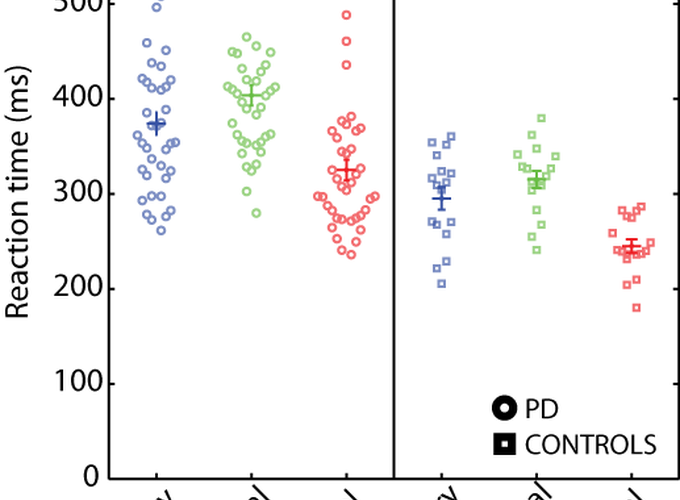Audiovisual Processing is Abnormal in Parkinson’s Disease and Correlates with Freezing of Gait and Disease Duration
Abstract
Background; Sensory and perceptual disturbances are prominent in Parkinson’s PD and probably contribute to motor deficits such as bradykinesia and gait disturbances, including freezing of gait. Simple reaction time tests are a helpful way to explore sensory responses, as they require little cognitive processing. However, reaction times reflect both sensory and motor processing and thus relative differences between modalities should be examined to reflect true sensory processing taking motor delays into account. Multisensory integration is the ability of the brain to integrate sensory information from multiple modalities into a single coherent percept, which is crucial when interacting with our environment such as for complex motor output. Objectives; The goal of this study was to; 1. Assess differences in unisensory (auditory and visual) and multisensory processing speed in people with PD and age-matched healthy controls. 2. Compare relative differences in unisensory processing in people with PD with disease duration and freezing of gait status taking into account the motor delays, which are invariably present in PD. 3. Compare relative differences in multisensory (audiovisual) processing between the PD cohort and age-matched controls.Methods; 39 people with PD and 17 age-matched healthy controls performed a reaction time task in response to unisensory (auditory-alone, visual-alone) and multisensory (audiovisual) stimuli. Results; Relative unisensory differences occur in PD which are correlated with freezing of gait status and disease duration as well as multisensory processing differenes between people with PD and healthy controls. Conclusion; There are significant unisensory and multisensory processing abnormalities in PD which are associated with disease progression. This adds to the literature supporting both simple and higher-order sensory processing abnormalities in PD.
